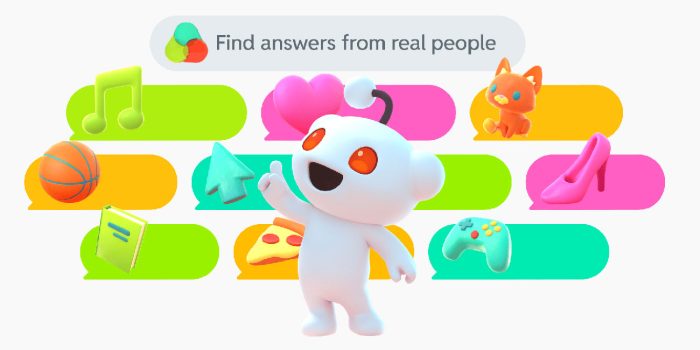If you’ve ever used Reddit to dig for answers or insights, you know how much…

10 Best AI Tools of 2023

Yesterday
AI has been with us in some form or another for decades, but it wasn’t until the tail-end of 2022 that it started to resemble a usable technology.

The release of OpenAI’s ChatGPT last year prompted a gold rush in machine learning. As a result, 2023 has been a year in which seemingly every tool, app, and device has been “enhanced” with AI technology — whether it needed it or not.
But we’ve now had a chance to sort the wheat from the chaff and if 2023 was the year of AI, then 2024 seems destined to be the year of usable, mature AI. Here is a roundup of the most promising AI tools from the last year, focusing on those we expect to keep building over the next 12 months.
ChatGPT 4.0
You can’t discuss AI without covering OpenAI’s flagship product, ChatGPT. ChatGPT, as the name implies, is a chat-based UI backed by natural language processing.
OpenAI’s API powers many of the better tools available online. The current version is 4.0, although the current crop of tools that access the API use 3.5.
ChatGPT’s interface isn’t the most advanced, opening the door for other tools to piggyback on its technology. But if you understand AI prompts, it’s the most potent text generator available.

Adobe Firefly
Adobe’s Creative Cloud had been losing ground to its rivals for years. Sketch, Affinity, and Figma took chunks out of Adobe’s market share.
Adobe built AI into its products this year under the name Adobe Firefly. AI is now augmenting everything from Express to Illustrator, but nowhere is it as jaw-dropping as Photoshop’s AI upgrades.
The generative fill and expand tools allow you to insert content into photos seamlessly. The best use I’ve seen is expanding the canvas and inserting real-looking content that simply wasn’t there. It works best with landscapes and means you can resize images for responsive design without retaking the photographs.
Adobe Firefly isn’t the only tool that enables generative fill, but in terms of integration with tools you’re probably already using, it’s leagues ahead of the competition.

Soundraw
Finding royalty-free music for the web has always been a challenge. The music industry is particularly tightly controlled, and even if music artists are happy for their work to be used, their record companies normally aren’t.
Soundraw side-steps licensing by generating music using AI. Select your genre, apply filters, and watch as the site creates music in seconds.
It’s genuinely a game-changing application of AI.

Descript
Descript is one of the most impressive applications of machine learning we’ve seen all year. It provides AI tools for editing video and, in doing so, transforms the way we work.
Record your video, and Descript will create a transcript; edit the transcript text, and the video will automatically be updated to match. And that’s not all. Descript includes several tools for improving the quality of your videos, including voice cloning for professional voice-overs.
It’s the simplest way to create professional quality videos for those of us who don’t have an editing suite.

Jasper
If ChatGPT is too “chatbot” for you, and you prefer working with an interface, check out Jasper.
Jasper is a writing app with built-in templates to help you generate code without the need for complex prompts. It’s an excellent entry-level text generator because you don’t need to understand how AI functions to use it, and the previous generation of ChatGPT powers it, so the output is high-quality (although not as high as ChatGPT 4.0).
Jasper is an excellent app if you write a lot of marketing, especially blog posts. You still have to put in some work, guiding the content creation process and (like all AI) doing your fact-checking. But for rapidly generating multiple blog posts, it’s hard to beat.
The only downside to Jasper is that because there’s a layer of interface between you and the actual prompts being sent to AI, it’s a little less flexible than you might like.

Midjourney
When it comes to complete image generation, the two front-runners all year have been Dall-E 2 and Midjourney. The latter has always produced marginally better results, but until recently, you needed to use it via Discord, which was irritating, to say the least.
However, Midjourney has just launched its website, making the tool far more accessible and the clear front-runner for image generation.
It’s rare for Midjourney to create something that isn’t easily identifiable as AI-generated, but considering how far Midjourney has progressed in the last 18 months, that seems likely to change in the coming year.

Fireflies
If you’re working remotely, you inevitably take part in a lot of video calls. What happens when you’ve finished? Do you hastily type up your notes, try to remember what was said, or get pulled into another meeting?
The unfortunate reality is that decisions get lost, and productivity plummets because everyone remembers a slightly different version of the conversation.
Fireflies is an excellent AI-powered app that integrates with most popular meeting apps, to record and annotate what is said, and by whom; the record can be stored, searched, or output.
It’s a must-have tool for companies that do everything remotely.

GrammarlyGO
Grammarly is a fantastic tool for checking spelling and grammar, especially if you’re not writing in your native language. It’s a little opinionated — it [incorrectly] flags Oxford commas as mistakes and loathes the passive voice. But everyone makes typos, and if you’re writing professionally, you can’t not run some type of check on your text.
This year, Grammarly introduced GrammarlyGO, its AI tool. Strangely, it isn’t part of the desktop app; you can only get it in the web app version.
Unlike other writing tools, Grammarly doesn’t write for you; it makes suggestions about your written text. For example, you can ask it to identify any gaps in your written post.
It’s all about making you a better communicator. Like the best AI tools, it doesn’t replace you; it makes you faster, less error-prone, and more creative.

Motion
The point of AI is to help you work smarter, not harder. Motion does just that by planning your projects for you and, in the process, increases your productivity by 137%.
More productivity means hitting your deadlines, tackling large projects in the proper order, and never working into your free time.
Motion works best with complex team tasks because that’s where traditionally there’s the most friction, but it also beats simple to-do lists for individuals.

Microsoft Bing
The last tool in our roundup didn’t set the world alight in 2023, but 2024 could be its year, and if it is, we can look back at February 2023 as the point it all started.
Microsoft’s Bing search engine is a poor substitute for Google Search. It’s been around since 2009, and despite introducing matching tools like the Bing Webmaster Tools, it’s got a tiny fraction of Google’s market share.
But this year, Microsoft beat Google to the AI draw, announcing that Bing would use ChatGPT 3.5 to provide users with improved search. Google tried to respond and fell flat on its face.
AI-powered search is still in its infancy, and Google will certainly make up some of the ground it lost this year. But for now, Microsoft Bing is the leading search tool, and if it can maintain its advantage through 2024, it could lead to the biggest shakeup of the SEO industry for over two decades.

Simon Sterne
Simon Sterne is a staff writer at WebdesignerDepot. He’s interested in technology, WordPress, and all things UX. In his spare time he enjoys photography.
#Tools


